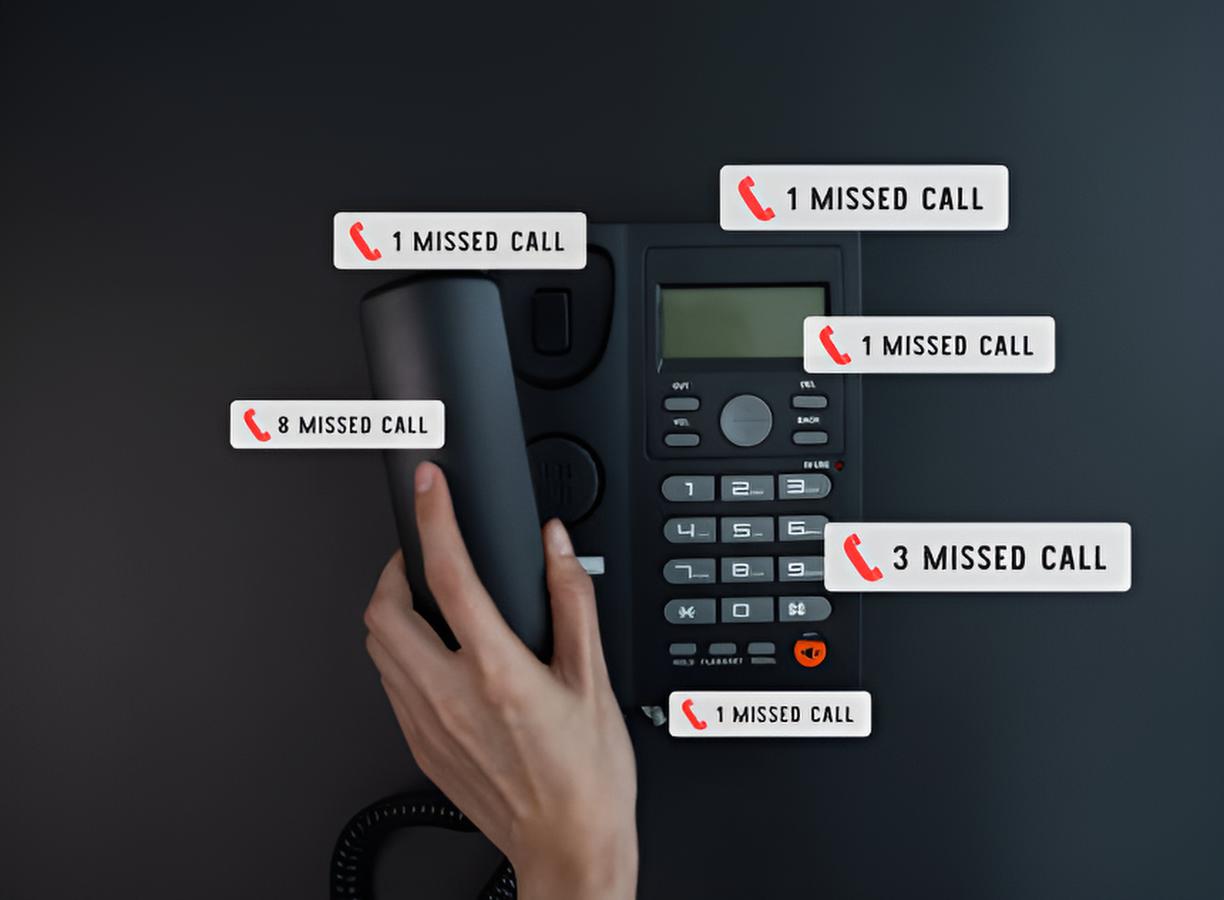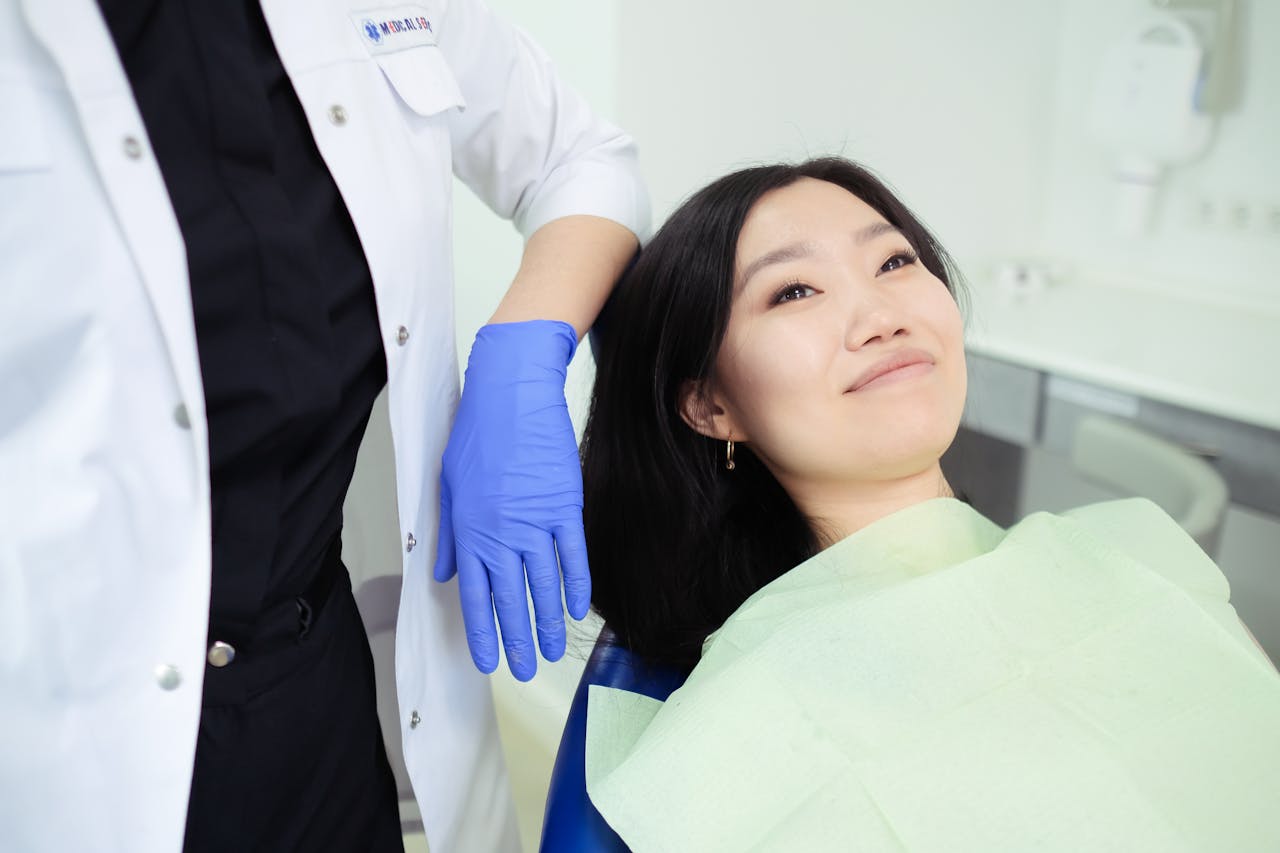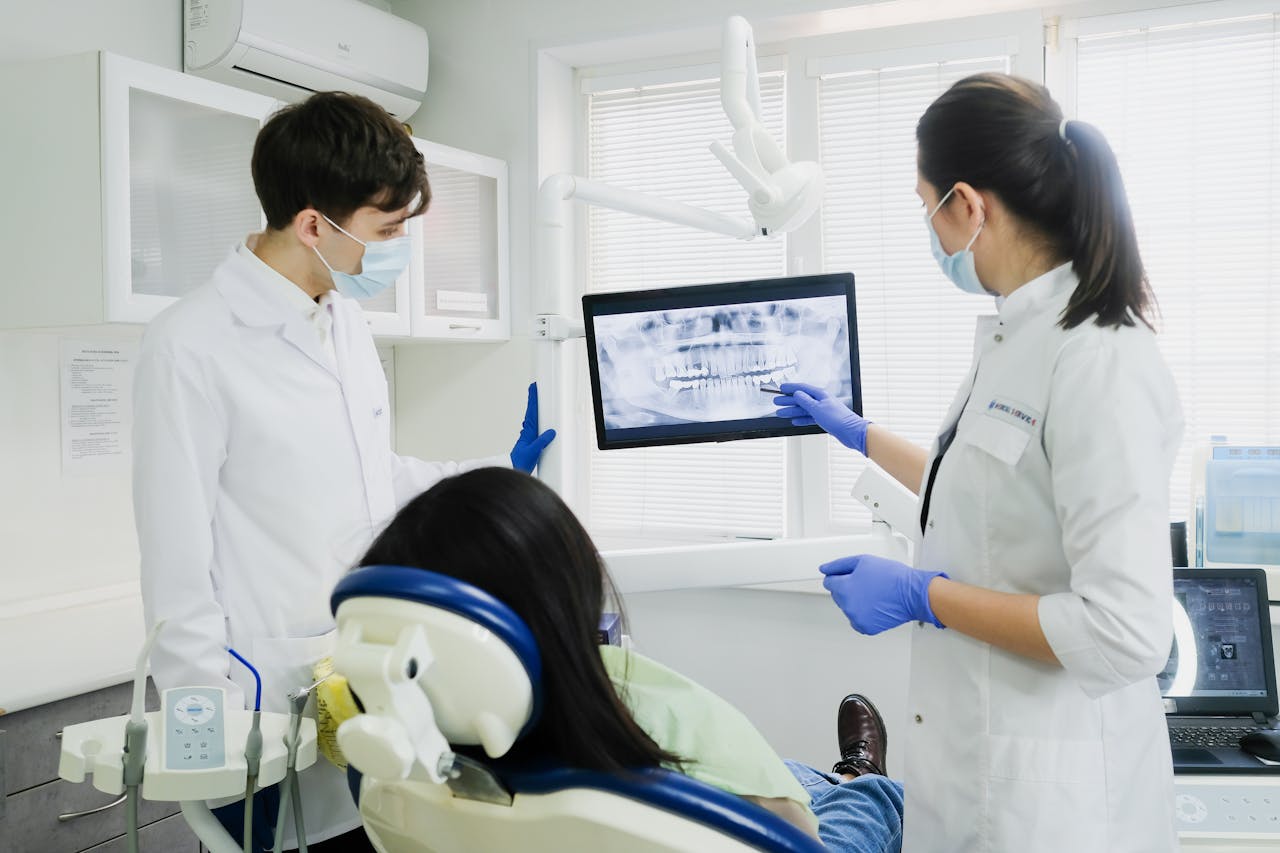46 Missed Calls in Dental Practices Statistics – The $21 Million Revenue Crisis Every Practice Must Address

Comprehensive data compiled from extensive research across dental industry reports, practice management studies, and patient communication analytics
Key Takeaways
- Missed calls create a devastating financial impact - Practices lose $100,000-$150,000 annually from missing 20-38% of calls, with each missed new patient worth $8,000 in lifetime value.
- Patient behavior has fundamentally shifted - 75% of missed callers never call back, 67-80% won't leave voicemail, and younger generations actively avoid phone communication entirely.
- Technology adoption varies widely by survey - AI adoption ranges from 18-35% depending on survey methodology and definition, with proven 90% call answer rates and 300-500% ROI for adopters.
- Operational inefficiency consumes massive resources - Practices spend 10+ hours weekly on phone scheduling while missing peak-hour calls that arrive predictably at 10-11 AM.
- Geographic and practice size disparities worsen the crisis - Solo practices face "devastating" losses while DSOs lose millions annually across networks.
- The performance gap proves the opportunity - Top 10% of practices answer 95% of calls and convert 75% to appointments versus the industry average of 23% conversion.
- HIPAA compliance and staffing challenges compound problems - $80,000-$120,000 annual compliance costs meet 38% staff vacancy rates, and $10,000 per turnover
Core Missed Call Statistics & Revenue Impact
- Dental practices lose $100,000 to $150,000 annually due to missed phone calls. The average practice misses 20-38% of incoming calls, creating a massive revenue hemorrhage according to Simbo AI research. This loss compounds over time, potentially reaching $21 million over 30 years for a single practice. The financial devastation stems from both immediate lost appointments and the lifetime value of patients who never return after encountering poor phone service.
- Each missed new patient call represents $850 in immediate revenue loss. More critically, these missed connections translate to $8,000 in lifetime patient value when factoring in ongoing treatment and referrals, as documented by Golden Proportions Marketing. This calculation assumes average treatment patterns over a typical 10-year patient relationship. Practices missing just 10 new patient calls monthly sacrifice $85,000 in immediate revenue and $800,000 in lifetime value annually.
- 75% of missed callers never call back and contact competitors instead. Research from PeerLogic confirms that three-quarters of patients who encounter missed calls immediately move to the next practice on their list. This behavior intensifies during dental emergencies or when patients experience pain. The competitive landscape means every missed call directly benefits rival practices, making poor phone management a gift to competitors.
- Only 68% of dental practice calls get answered during business hours. Industry analysis by Group Dentistry Now reveals that nearly one-third of all incoming calls go unanswered, even during regular office hours. This poor performance contrasts sharply with other service industries, where 90%+ answer rates are standard. The gap between patient expectations and dental practice reality creates immediate dissatisfaction and drives patients to more responsive competitors.
- The average dental office receives 123 calls daily, yet misses 50-100 monthly. Call volume analysis from HBT Communications shows practices field thousands of calls monthly, but fail to capture a significant percentage. Peak periods see even higher miss rates, with some practices missing 30% of calls during rush hours. This consistent pattern of missed opportunities represents millions in lost revenue across the industry.
- Peak calling hours at 10:00 AM, 11:00 AM, and 9:00 AM see the highest miss rates. Data indicates that predictable daily patterns create systematic failures in call management. Despite knowing when calls spike, most practices maintain flat staffing levels throughout the day. This mismatch between demand and capacity guarantees missed opportunities during the most critical revenue-generating hours.
- Industry-wide appointment conversion averages just 23% according to a landmark study. A comprehensive analysis of over 10,000 dental practice calls found that only 23% convert to booked appointments, while the top 10% of practices achieve 75% conversion rates, according to Group Dentistry analysis. Some practices report higher subset metrics, with answered calls converting at 42% in best-case scenarios, but the industry-wide average remains dismally low at 23%.
Patient Behavior & Expectations
- 67-80% of callers don't leave voicemail and never call back. Patient research from Envera Health shows voicemail essentially equals a lost patient in modern dental practices. The reluctance to leave messages reflects both privacy concerns and the availability of alternative providers. Practices relying on voicemail as a backup system are effectively telling patients to seek care elsewhere.
- Patients tolerate only 40 seconds on hold before hanging up. The average person's patience has declined dramatically with the rise of instant digital services, as documented by iceConnect research. This 40-second window barely allows for a single ring transfer or brief hold. Modern patients, accustomed to immediate responses from other industries, bring these same expectations to dental practices.
- 60% of missed callers immediately contact competing practices. Research confirms that the majority of patients have multiple options and exercise them instantly. This behavior is particularly pronounced in urban areas with high dentist density. Every missed call essentially hands a ready-to-book patient directly to competitors, making poor phone management a form of reverse marketing.
- 87% of new patients hang up when encountering voicemail without a proper greeting. First impressions prove critical, with nearly nine in ten potential new patients abandoning practices that fail to answer professionally, according to dental AI research. This statistic emphasizes the importance of human or AI connection over automated systems. New patients seeking to establish care relationships interpret voicemail as a sign of poor service quality.
- 75% of millennials prefer text-only over voice-only communication. Generational preferences analyzed by Dental News show younger patients actively avoiding phone calls whenever possible. This preference stems from phone anxiety and the convenience of asynchronous communication. Practices must adapt to multi-channel communication or risk losing entire demographic segments.
- 90% of patients under 40 prefer SMS for appointment communications. Text messaging dominance among younger demographics reflects broader communication trends. These patients expect the same convenient, non-intrusive communication they receive from other service providers. Practices limiting themselves to voice-only communication automatically exclude a significant patient segment.
- 43% of patients search for dental care after business hours. Online behavior data from Goodcall reveals that nearly half of patient searches occur evenings and weekends when practices are closed. This mismatch between patient availability and practice hours creates systematic access barriers. Practices without after-hours solutions miss almost half of potential new patient opportunities.
Financial Impact by Practice Type
- Solo practices face "devastating" losses from missed calls due to limited capacity. Individual practitioners lack the buffer and redundancy of larger organizations, making each missed call proportionally more damaging according to industry analysis. A solo practice missing 20% of calls might lose its entire profit margin. The financial vulnerability of small practices makes efficient call management essential for survival.
- DSOs lose millions annually across their networks from missed calls. Large dental service organizations managing multiple locations face exponential revenue loss from systematic call management failures. A 100-location DSO missing 25% of calls could lose $10-15 million annually. The scale of these organizations amplifies both the problem and the opportunity for improvement.
- Practices missing 10 calls monthly lose $8,500, scaling to $102,000 yearly. This direct correlation between missed calls and revenue helps practices quantify their specific losses. Even seemingly small numbers of missed calls create a significant annual impact. The math becomes undeniable when practices calculate their actual missed call volumes against these revenue figures.
- New patient acquisition costs $400-500, making missed calls especially painful. Marketing investment data shows practices spend heavily to generate each new patient inquiry. Missing these expensively acquired leads wastes both the marketing investment and the potential revenue. This double loss makes poor call management one of the most costly operational failures in dental practices.
- AI-powered practices report 12% revenue increases and 24% profit improvements. Technology adoption studies demonstrate significant financial gains from automated call management. These improvements come from both capturing more calls and reducing operational costs. The ROI typically manifests within 3-6 months of implementation, making AI adoption a rapid value generator.
- Practice valuations suffer from poor call metrics, reducing sale prices significantly. Professional valuators assess practices at 70-80% of collections or 6-12x EBITDA, both directly impacted by call performance. Poor call management reduces both metrics, potentially lowering practice value by hundreds of thousands. Sellers preparing for transition must address call management to maximize valuation.
Industry Benchmarks & Performance Gaps
- Average healthcare hold time reaches 4.4 minutes versus the 50-second target. Industry standards from RevUp Dental show dental practices far exceeding acceptable wait times. This gap between reality and expectations drives patient frustration and abandonment. Every minute over the target threshold increases abandonment rates by approximately 15%.
- 60% of patients abandon calls if waiting longer than one minute. Patient tolerance data reveals the majority won't wait beyond 60 seconds for a connection. This behavior has intensified with mobile phone usage, where alternatives are immediately accessible. Practices must answer within this critical window or lose the majority of callers.
- Top 10% of practices answer 95% of calls versus the 80% industry average. Performance distribution analysis from Large Practice Sales shows elite practices dramatically outperform peers in basic call answering. This 15-point gap in answer rates translates to hundreds of additional patients annually. The consistency of top performers proves that excellence is achievable with proper systems and commitment.
- The dental industry averages only 23% overall appointment conversion from all calls. Comprehensive studies of thousands of dental practice calls reveal this systematic failure in phone-to-appointment processes across the industry. This means 77% of all callers don't book appointments despite initiating contact. Poor phone skills, complex scheduling, and lack of availability contribute to this dismal performance.
- First call resolution rates hover at 52% in healthcare, below the 71% benchmark. Quality metrics show nearly half of patient calls require callbacks or transfers to resolve. This inefficiency frustrates patients and consumes additional staff time. Each failed first-call resolution increases the likelihood of patient defection to competitors.
- Average speed to answer stretches to 3 minutes 22 seconds in healthcare. Response time analysis reveals patients wait over three minutes on average before speaking with someone. This delay far exceeds the 30-second target and 40-second patience threshold. The gap between patient expectations and practice performance guarantees high abandonment rates.
- Call abandonment rates average 7% but spike to 60% after one minute. Abandonment patterns documented by Dialog Health show dramatic increases tied to wait time. While baseline abandonment seems manageable, the reality during peak periods proves catastrophic. Practices must focus on worst-case scenarios rather than averages when designing phone systems.
Technology Adoption & Solutions
- AI adoption in dental practices ranges from 18-35% depending on survey methodology. Different surveys show varying adoption rates, with some studies finding 18% of dental professionals using AI tools regularly, while others report up to 35% adoption when including all forms of AI technology and experimental usage. This variation reflects differences in survey populations, definitions of "AI adoption," and geographic scope. The trend clearly shows increasing adoption regardless of the exact percentage.
- Practices using AI receptionists achieve 90% call answer rates. Performance data from AnswerNet demonstrates AI-enabled practices dramatically outperform traditional operations in basic call capture. Some practices reach 98% answer rates with 24/7 AI coverage. The technology essentially eliminates missed calls as a revenue loss factor.
- 68% of businesses already text for appointments with 98% open rates. SMS adoption shows text messaging has become standard in appointment-based businesses outside dentistry, according to Adit research. Messages are read within 90 seconds on average. Dental practices lag behind other industries in adopting this proven communication channel.
- Only 26% of practices offer online booking despite 77% patient demand. The gap between patient preferences and practice capabilities remains massive in online scheduling, as shown by Textellent data. This mismatch forces patients into phone-based booking they actively avoid. Practices without online booking automatically exclude digital-first patients.
- AI virtual receptionist pricing varies widely from $149 to over $1,000 monthly. Market analysis reveals significant price variation based on features, call volume, and vendor. Entry-level solutions start around $149-$189 monthly for basic services, mid-tier options range from $399-$699, while enterprise solutions can exceed $1,000. Most practices find optimal value in the $300-$500 range, delivering 300-500% ROI through increased appointments and reduced labor costs.
- VoIP systems captured 55.6% market share, overtaking traditional phones. Technology transition data shows modern internet-based phone systems now dominate the dental market. These systems offer flexibility, features, and integration impossible with traditional lines. Practices clinging to legacy phone systems operate at a significant competitive disadvantage.
Patient Satisfaction & Retention Impact
- Dental industry Net Promoter Score averages 1-20 versus a 27 healthcare average. Satisfaction metrics from FollowApp reveal dental practices significantly underperform in broader healthcare in patient experience. Poor phone experiences contribute substantially to these low scores. Leading practices with proper systems achieve scores of 85.9, proving dramatic improvement is possible.
- Referred patients are 16% more profitable than non-referred patients. Referral economics analyzed by HIP Creative show word-of-mouth patients generate superior lifetime value through higher treatment acceptance and loyalty. Missed calls and poor phone experiences directly reduce referral generation. Every dissatisfied caller represents multiple lost referral opportunities over time.
- 88% of healthcare callers judge the entire organization by phone experience. First impression research confirms phone interactions disproportionately influence overall perception. Patients assume phone quality reflects clinical quality. Poor phone experiences create lasting negative impressions that influence treatment acceptance and retention.
- Patient satisfaction drops 12% with each call transfer. Transfer impact analysis shows each handoff significantly degrades patient experience. Complex phone trees and multiple transfers frustrate patients before they reach help. Practices averaging 19% transfer rates face compound satisfaction penalties.
- One-third of patients switch providers after poor service experiences. Retention studies from Nextiva reveal 33% of patients leave practices following service failures, including phone problems. This churn rate means practices must constantly acquire new patients just to maintain census. Improving phone service directly impacts retention economics and practice growth.
Operational Efficiency & Staffing Challenges
- 52.2% of practices spend 10+ hours weekly on phone scheduling tasks. Time studies from PatientGain show the majority of practices dedicate an equivalent of full-time staff to phone scheduling. This represents 2 hours daily of high-cost labor on routine tasks. Automation could redirect these hours to revenue-generating patient care.
- Phone scheduling averages 8.1 minutes versus 2 minutes for online booking. Efficiency analysis by Arini reveals phone-based scheduling takes 4x longer than digital alternatives. Each call also requires staff availability, unlike asynchronous online booking. The time differential alone justifies investment in online scheduling systems.
- 38% of practices actively recruit dental assistants, with 77% finding it challenging. Staffing crisis data shows chronic shortages in front-office positions that handle phones. Positions take 2.5 months to fill and 1-2.5 months to train. This constant staffing churn ensures inconsistent phone coverage and service quality.
- Average call center agent utilization should be 75-85% for optimal performance. Workload standards from Giva indicate dental receptionists need buffer time between calls to maintain quality. Exceeding 85% utilization causes burnout and errors. Most practices run staff at 95%+ utilization, guaranteeing poor performance during peak periods.
- After-call work averages 4-8 minutes in healthcare settings. Post-call requirements analyzed by Five9 show that documentation and scheduling consume significant time beyond the conversation. This hidden time requirement means actual call capacity is 50% lower than apparent capacity. Practices underestimate true staffing needs by focusing only on talk time.
- Staff turnover costs $10,000 per position with $60,000 annual reassignment costs. Turnover economics from VCC Live reveal the true cost of constant recruitment and training. Each departure triggers cascading inefficiencies as remaining staff cover gaps. High-turnover practices face perpetual phone coverage problems regardless of policies or training.
Geographic & Market Variations
- Rural practices serve 24.3 dentists per 100,000 versus 36.7 in urban areas. Geographic disparities documented by the Rural Health Hub show rural communities face severe access limitations. These practices can't afford to miss calls as patients have few alternatives. The captive market makes phone accessibility even more critical for rural providers.
- DSO market penetration reaches 24.7% in Nevada, but under 10% in the Northeast. Market structure analysis reveals dramatic regional variations in practice ownership models. DSOs with sophisticated phone systems gain competitive advantages in fragmented markets. Independent practices must match DSO phone capabilities to remain competitive.
Frequently Asked Questions
Q: How much revenue does the average dental practice lose from missed calls annually? The average dental practice loses between $100,000 and $150,000 annually from missed calls, based on missing 20-38% of incoming calls. Each missed new patient call represents approximately $850 in immediate revenue and up to $8,000 in lifetime patient value, compounding to potentially $21 million over 30 years for a single practice.
Q: What percentage of dental practice calls go unanswered? Approximately 32% of dental practice calls go unanswered during business hours, with the average practice missing 20-38% of total incoming calls. This miss rate spikes during peak hours (10-11 AM) and can reach 30% or higher during busy periods when staffing doesn't match call volume.
Q: How quickly do patients abandon dental practice phone calls? Patients tolerate only 40 seconds on hold before hanging up, with 60% abandoning calls after one minute of waiting. The average speed to answer in healthcare stretches to 3 minutes 22 seconds, far exceeding patient tolerance. Additionally, 67-80% of callers won't leave a voicemail and never call back.
Q: What's the ROI of implementing AI phone systems in dental practices? AI virtual receptionists deliver 300-500% ROI with pricing varying widely from $149 to over $1,000 monthly, depending on features and call volume. Practices report 12% revenue increases and 24% profit improvements after implementation. AI-enabled practices achieve 90% call answer rates compared to 70% during business hours without technology, with some reaching 98% rates through 24/7 coverage.
Q: How do missed calls impact patient acquisition costs? With new patient acquisition costing $400-500 through marketing, each missed call wastes both the marketing investment and potential revenue. Digital marketing generates leads at $65-135 per patient while traditional marketing costs $200-1,000 per acquisition. Missing these expensively acquired leads creates a double loss for practices.
Q: What's the difference between top-performing and average dental practices in call management? Top 10% of practices answer 95% of calls and convert 75% to appointments, while the industry-wide average shows only 23% of all calls converting to appointments. Average practices answer about 68-80% of calls. This performance gap represents hundreds of additional patients annually for top performers.
Q: How do generational differences affect dental practice communication preferences? 75% of millennials prefer text-only communication, with 90% of patients under 40 preferring SMS for appointments. Gen Z shows the strongest phone aversion, with 60% dreading making calls. Baby Boomers still prefer phone communication, though 85% own smartphones. Text messages achieve 98% open rates versus 20% for emails.
Sources Used
- Simbo AI - Financial Consequences of Missed Calls in Dental Practices
- Group Dentistry Now - Dental AI Agents
- PeerLogic - Turning Missed Dental Phone Calls Into Profit
- Golden Proportions - The Hidden Cost of Missing New Patient Calls
- HBT Communications - Phone System Challenges for Dental Practices
- Dentistry IQ - $150,000 in Profits with Phone Call Data
- Envera Health - Healthcare Call Center KPI Metrics
- Dialog Health - Healthcare Call Center Statistics
- Dental News - Why Missed Calls Spell Trouble
- AnswerNet - Generational Communication Styles
- Adit - HIPAA Compliant Texting for Dentists
- FollowApp - NPS for Dental Practices
- Rural Health Information Hub - Oral Health in Rural Communities
- Dental Economics - Economic Impact of No-Shows
- DANB - Cost of Dental Assistant Turnover









